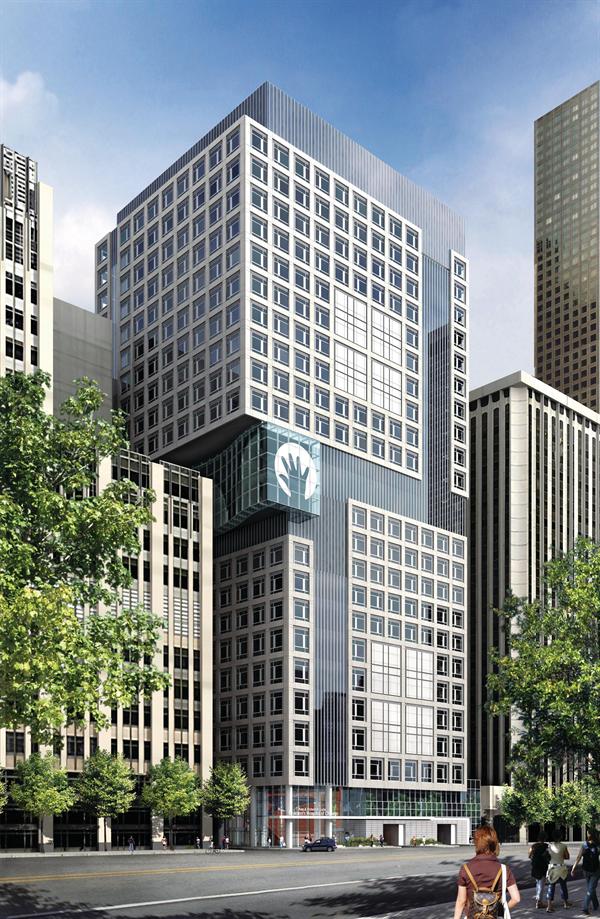Healthcare architecture: Testbed for building technology innovation

Healthcare construction is more than the top U.S. market for architects and other building companies. It's a testbed for emerging technologies, better materials, and green building.

Judging by next week's Healthcare Design Conference in Nashville, part of the impetus is demand-side. A workshop on Sunday brings together the six giant providers behind the "Healthier Hospital Initiative," including HCA, Inova, Advocate Health Care, MedStar, Partners Healthcare and Catholic Healthcare West.
One of the founding players for HHI is Kaiser Permanente, which made waves last week in a flap over PVC medical devices. Architects specialized in hospitals and clinics say the provider's ban on PVC medical devices will extend to floor and wall finishes, furniture, and even plumbing and roofing. In response, the trade group Vinyl Institute called the move "political."
Hardly. Architects and hundreds of building product manufacturers are betting against PVC. A coalition of 1,100 hospitals is on their side, along with groups like Health Care Without Harm, Practice Greenhealth, and The Center for Health Design.
This push for safer, greener healthcare architecture has a supply side, too. Companies developing innovations in building technology often see hospitals as a key market but also a sort of lab bench. A recent example is BIPV maker Polysolar, which unveiled an early application of its new transparent photovoltaic (PV) glass for rooftop uses at Willmott Dixon Community Healthcare Campus in the U.K.
Walking down the halls of NeoCon East in Baltimore last week, I noticed that most new product launches were for healthcare, with the latest germ-fighting fabrics and high-tech furnishings. Legacy Furniture's HEAL:x, with its breathable mesh backs and antimicrobial copper, was one of dozens of examples.
Bleeding-edge products with short installed track records get their debut in hospitals, in part, because manufacturers are flooding the gates.
Demographics are on their side. A great HermanMiller white paper cites Census Bureau stats on a doubling of people over 65 by 2050, the group that's the largest health market segment at 37.5%. So even if flat forecasts for 2012 healthcare construction are right -- Moody's and McGraw-Hill Construction predict 3% to 11% growth or so, respectively -- it remains by far the most active building segment. In 2011, it was the ONLY positive-growth sector, notes American Institute of Architects chief economist Kermit Baker.
That’s why design firms like HDR Architecture, the No. 1 U.S. healthcare architect with $160 million in annual billings according to Building Design + Construction (a trade journal I write for), are still growing and hiring. New facilities cost as much as $2 million per bed to construct.
The third most active, Perkins+Will, was way ahead on the PVC issue. It launched its own database of toxic building materials in 2009. At the Greenbuild show in Toronto last month, they went a step further by launching "the industry's first building product transparency label" with the commercial architectural products company Construction Specialties. The labeling idea discloses "the complete make-up of a product, highlighting critical life-cycle information and potential human health impacts."
Designer societies will help drive innovation. Brand-new groups include the American Academy of Healthcare Interior Designers (AAHID) and the American College of Healthcare Architects. AIA has its Academy of Architecture for Health.
The most influential by far, however, has been the Center for Health Design, a promoter of evidence-based design, or EBD, which bases building decisions on credible research about patient outcomes. The Center's Pebble Project links 50 healthcare providers and manufacturers using EBD, such as Military Health System, with on its own runs 70 hospitals serving 9.2 million people worldwide.
With hundreds of billions in purchasing power, healthcare remains the market-maker -- and the technology testbed -- for 2012.
Top 5 Healthcare Firms
- HDR Architecture ($160 million)
- AECOM Technology Corp. ($150 million)
- Perkins+Will ($136 million)
- HOK ($118 million)
- Cannon Design ($96 million)
This post was originally published on Smartplanet.com